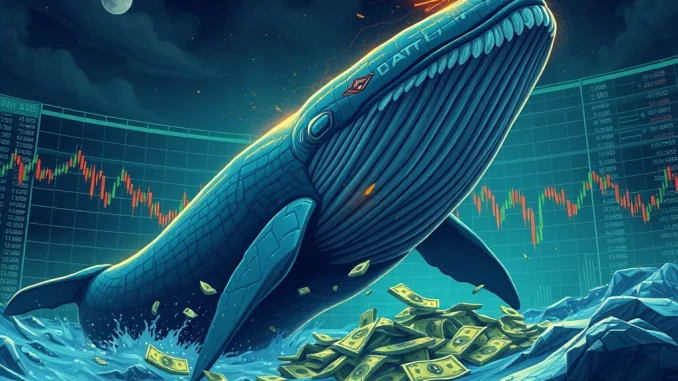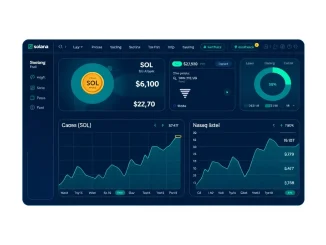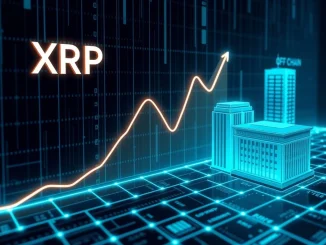
Imagine watching $100 million disappear in just one week. That’s the dramatic reality faced by a prominent trader on the decentralized exchange Hyperliquid, in what’s being described as a significant Hyperliquid whale loss. This event serves as a stark, and expensive, reminder of the extreme volatility and amplified risks inherent in high-stakes cryptocurrency trading, particularly when using leverage.
What Happened in This Massive Crypto Trading Loss?
The trader at the center of this story is known as James Wynn, a whale-status participant on the Hyperliquid platform. According to data shared by on-chain analyst @EmberCN on X, Wynn’s trading activity over the past week resulted in losses totaling an estimated $100 million. This staggering figure wasn’t just principal; it included wiping out what was once an impressive $87 million in unrealized gains. Beyond the erased profits, Wynn also lost approximately $17.67 million of his initial capital.
Think about that for a moment: turning a massive paper profit into a significant real loss, ultimately depleting almost all capital. It highlights how quickly fortunes can change in the fast-paced world of crypto trading.
The final blow, detailed by the analyst, involved recent long positions on Bitcoin (BTC) and the meme coin PEPE. These positions were reportedly opened with $3.25 million in margin. When they were eventually closed, they incurred a loss of $2.79 million, leaving the trader with a mere $460,000 balance.
- Total Estimated Loss (One Week): $100 million
- Erase Unrealized Gains: $87 million
- Realized Principal Loss: ~$17.67 million
- Recent Trade Margin (BTC/PEPE): $3.25 million
- Recent Trade Loss: $2.79 million
- Remaining Balance: ~$460,000
Who is James Wynn Crypto and Why Hyperliquid?
While the identity behind the pseudonym James Wynn crypto is not publicly confirmed, the term ‘whale’ signifies a trader with substantial capital whose moves can potentially influence market sentiment or liquidity. Whales often trade large volumes, and their successes or failures are closely watched by the community.
Hyperliquid is a relatively new decentralized perpetual exchange known for its speed, low fees, and high leverage options, sometimes up to 50x on certain pairs. Decentralized exchanges (DEXs) like Hyperliquid appeal to traders seeking to trade directly from their wallets without needing to deposit funds onto a centralized platform, offering a different risk profile and level of control.
Understanding the Scale of Crypto Trading Losses
While individual traders experiencing losses is common, crypto trading losses on this scale are rare and noteworthy. A $100 million loss underscores the immense capital whales deploy and the exponential risks they undertake, especially when utilizing high leverage. It’s a scale of loss that few retail traders will ever encounter, yet the underlying mechanisms of how such losses occur are relevant to everyone using leveraged products.
This incident isn’t just about one trader; it provides a dramatic example of market dynamics and the unforgiving nature of volatility combined with leverage.
The Risks of DeFi Trading and Leverage Trading
This event serves as a potent case study on the inherent risks of both DeFi trading and leverage trading. Decentralized exchanges offer advantages like self-custody, but they can also present unique challenges, including smart contract risks or less robust support compared to centralized counterparts (though Hyperliquid aims for high performance).
Leverage, while offering the potential for magnified gains, equally magnifies losses. Even a small adverse price movement can lead to a margin call or liquidation when trading with high leverage. In Wynn’s case, holding positions that moved against him, even after significant unrealized gains, ultimately led to the catastrophic outcome.
Consider the BTC and PEPE positions: risking $3.25 million in margin to potentially control a much larger notional value of assets. When the market moved unfavorably, that margin was quickly insufficient to cover the losses, leading to the positions being closed out at a significant deficit relative to the margin posted.
Lessons from Extreme Leverage Trading
While few will trade at the level of a whale, the lessons from this extreme leverage trading event are universal:
- Leverage is a Double-Edged Sword: It can amplify profits, but it can also lead to rapid and complete capital loss. Understand the liquidation price and risk tolerance.
- Unrealized Gains Aren’t Real: Profits only become real when positions are closed. Market reversals can wipe out paper gains instantly.
- Volatility is Constant: Crypto markets, especially for altcoins like PEPE or even Bitcoin during certain periods, are prone to swift, significant price swings. High leverage makes these swings far more dangerous.
- Risk Management is Paramount: Setting stop-losses, managing position sizes relative to total capital, and avoiding over-leveraging are critical, regardless of account size.
- Emotions Matter: Holding onto positions hoping for a recovery after significant losses or unrealized gains are eroding can be a costly mistake.
Conclusion
The reported $100 million Hyperliquid whale loss by James Wynn is a dramatic illustration of the high-stakes nature of crypto trading and the brutal efficiency with which leverage can erase fortunes. It underscores that even experienced, well-capitalized traders are not immune to the risks of market volatility and aggressive position sizing. For all traders, regardless of scale, this serves as a powerful reminder of the importance of prudent risk management and respecting the power of leverage in the unpredictable world of decentralized finance.



